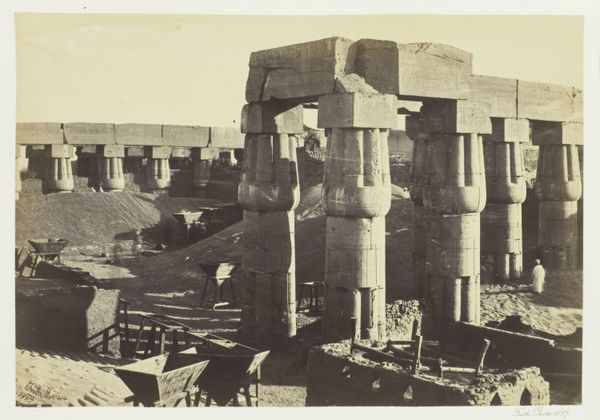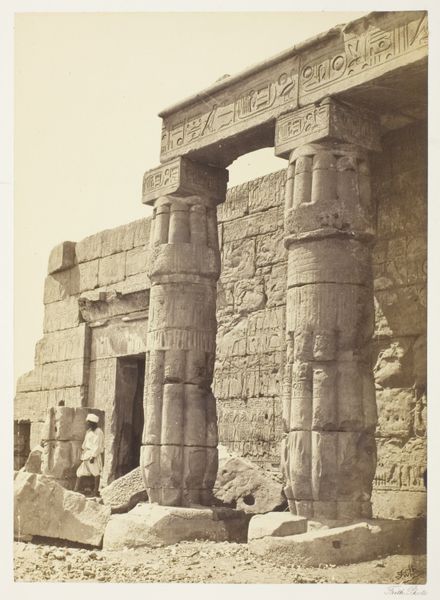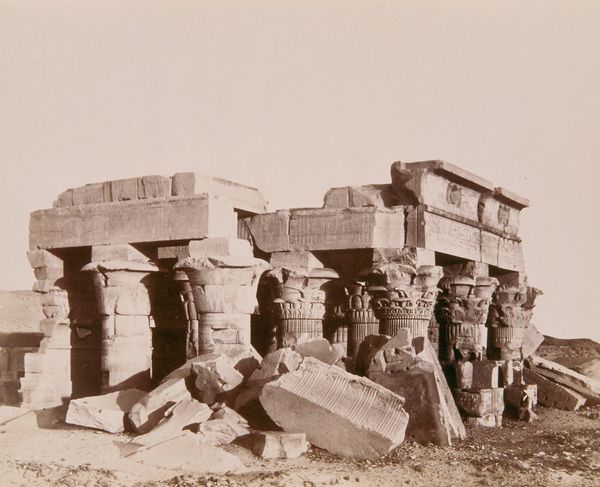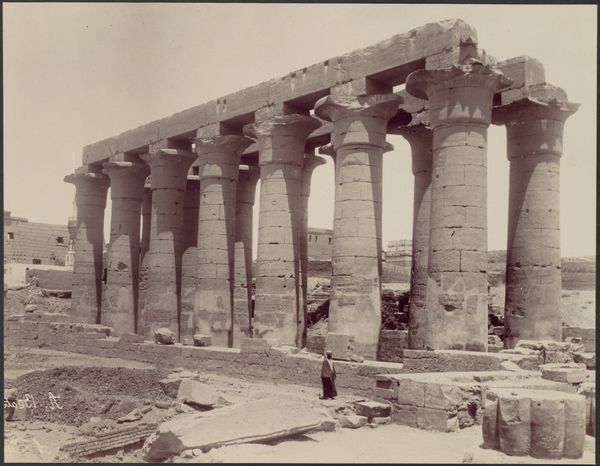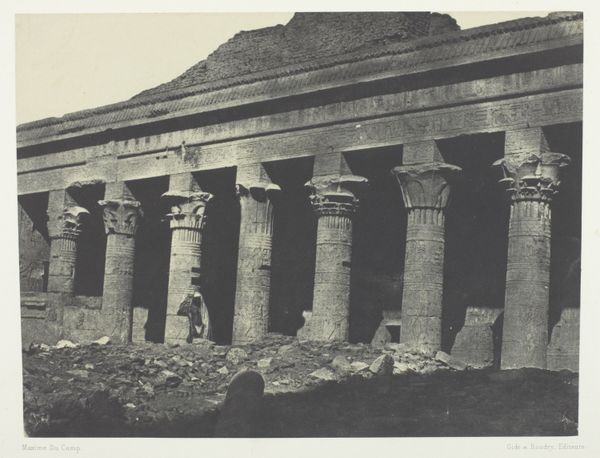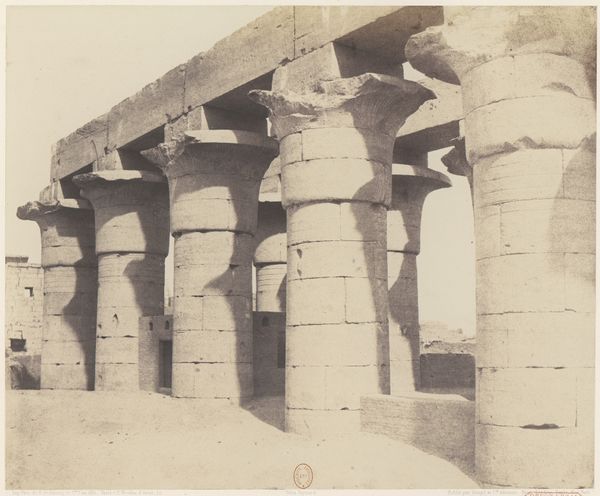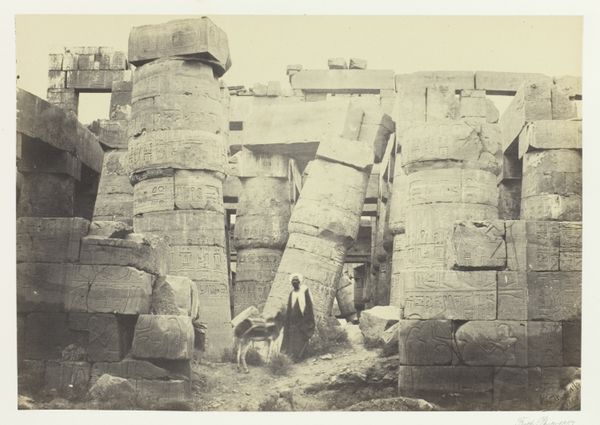
Louksor (Thèbes), Construction Postérieure - Galeries - Parallèles 1851 - 1852
0:00
0:00
photography, architecture
#
landscape
#
outdoor photograph
#
photography
#
ancient-mediterranean
#
column
#
arch
#
monochrome photography
#
outdoor activity
#
architecture
#
monochrome
Dimensions: Image: 24 x 30.2 cm (9 7/16 x 11 7/8 in.) Mount: 40.2 x 52.3 cm (15 13/16 x 20 9/16 in.)
Copyright: Public Domain
Curator: Standing before us is Félix Teynard’s photograph, "Louksor (Thèbes), Construction Postérieure - Galeries - Parallèles," taken between 1851 and 1852. A stately image, isn't it? Editor: It certainly is, if 'stately' captures the aura of eroded grandeur. There’s a desolate stillness to it; a silence that speaks volumes about lost empires and the passage of time. Curator: Absolutely. Teynard’s photographic journey through Egypt was, in essence, a study in power dynamics. Think of the context: European nations casting their gazes – and, frankly, their ambitions – upon the Middle East. His lens documented not only monuments but also the imperial gaze itself. Editor: And that imperial gaze inevitably shapes how we perceive the subject matter. The architecture becomes less about spiritual intent or even pharaonic power, and more about a colonial enterprise documenting a conquered history. The sheer mass and form of the columns feel, dare I say it, flattened by that framing. Curator: Precisely. The formal elements of the image – the repetitive columns, the parallel lines of the architecture – serve to highlight not only the grandeur of the temple but also the organizational structure of power. Moreover, it is hard to disassociate this visual inventory from what would follow: its dissemination via photography created and fueled Western narratives about ancient Egypt. Editor: Photography, even in its early days, had an inherently democratizing effect but with a deeply skewed application. Here, it enables wider knowledge, but it's undeniably intertwined with agendas of ownership and dominance, of a civilization displayed almost like a trophy. How many people, even today, engage with the cultural realities versus the exotic spectacle? Curator: A crucial question. We also have to remember how photographs, and even photographs like these which appear neutral and dispassionate, could be interpreted, understood and leveraged by subjugated peoples themselves to form new understandings of their cultural heritages. The photograph as political mirror, as agent of self-reflection as much as projection. Editor: Which, ironically, shifts us from purely external gazing back to the inherent significance of Luxor and its symbolism for the very peoples who built and maintained this place. Food for thought. Curator: Indeed. Teynard’s work provides fertile ground for conversations extending beyond the aesthetics, plunging into deeper historical and socio-political questions.
Comments
No comments
Be the first to comment and join the conversation on the ultimate creative platform.


